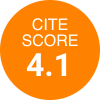fig4

Figure 4. DNA-driven immune response mediated by DNA exchange between human and bacterial extracellular vesicles. Human/bacterial genomic/mitochondrial DNA carried by EVs can be delivered to cells as damage- (DAMP) or pathogen-associated molecular pattern (PAMP). EV-DNA can activate inflammatory pathways through cytosolic DNA receptors such as cGAS (cyclic GMP-AMP) and AIM2 (absent in melanoma 2 or interferon-inducible protein). Activation of the cGAS/STING pathway causes downstream release of type I interferons (IFN-α, IFN-β, IFN-ε). Activation of AIM2 produces interleukins and tumor necrosis factor (TNF). This may manifest as a subclinical sterile inflammatory response in gestational tissues such as the placenta and amniochorion. bDNA: bacterial DNA; BEV: bacterial extracellular vesicles; cfDNA: cell-free DNA; DNA: human DNA; HEV: human extracellular vesicles; IRF: interferon regulatory factor; mtDNA: mitochondrial DNA; MVB: multivesicular bodies; NF-κB: nuclear factor-kappa B; STING: stimulator of interferon genes. Created with BioRender.com.








